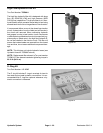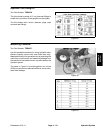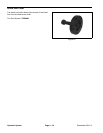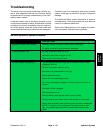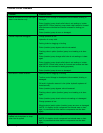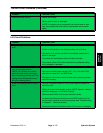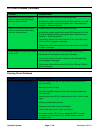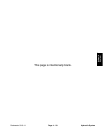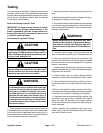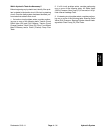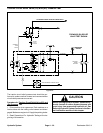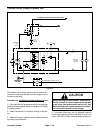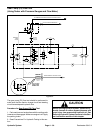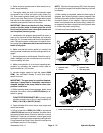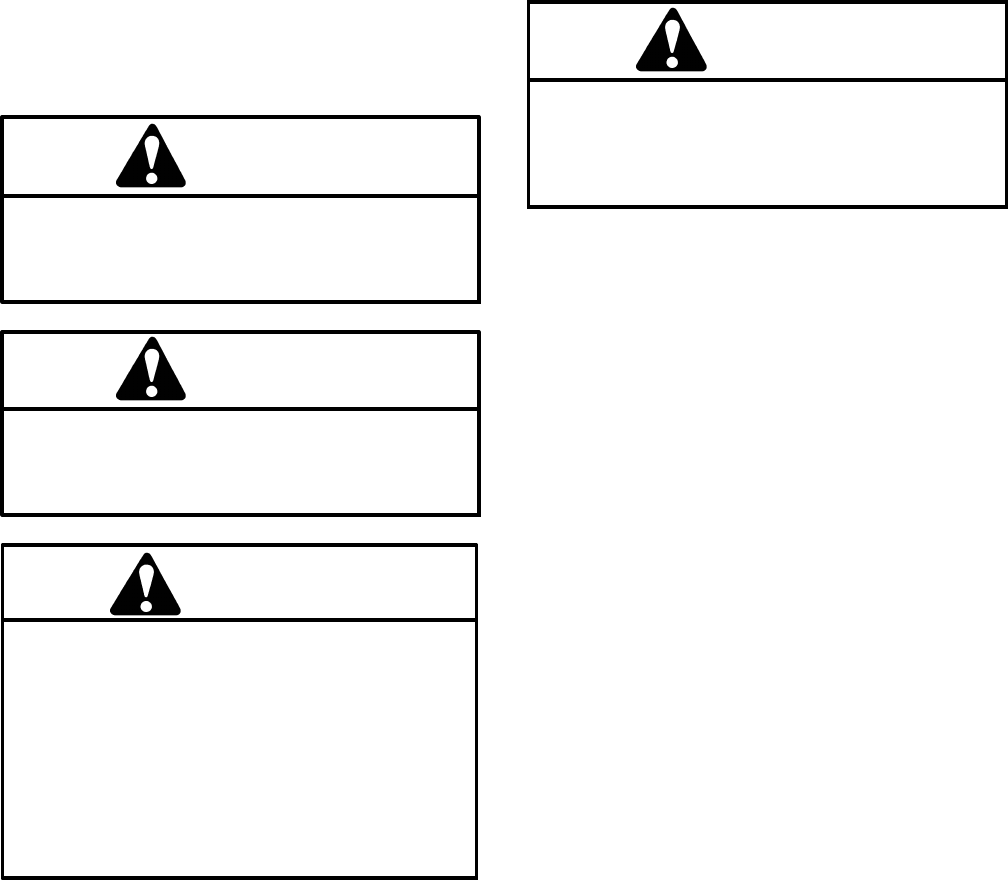
Reelmaster 5010- HHydraulic System Page 4 - 30
Testing
The most effective method for isolating problems in the
hydraulic system is by using hydraulic test equipment
such as pressure gauges and flow meters in the circuits
during various operational checks (see the Special
Tools section in this chapter).
Before Performing Hydraulic Tests
IMPORTANT: All obvious areas such as oil supply,
oil filter, binding linkages, loose fasteners or im-
proper adjustments must be checked before as-
suming that a h ydraulic component is the source of
a hydraulic system problem.
Precautions for Hydraulic Testing
CAUTION
Failure to use gauges with expected pressure
(psi) rating as listed in test procedures could re-
sultindamagetothe gaugeandpossibleperson-
al injury from leaking hot oil.
CAUTION
All testing should be performed by two (2)
people.One personshould bein theseat tooper-
ate the machine and the other should monitor
test equipment and record test results.
WARNING
Keep body and hands away from pin hole leaks
or nozzles that eject hydraulic fluid under high
pressure. Do not use hands to search for leaks;
use paper or cardboard. Hydraulic fluid escap-
ing under pressure can have sufficient force to
penetrate the skin and cause serious injury. If
fluidisinjected intotheskin, itmust besurgical-
ly removed within afew hours by a doctorfamil-
iar with this type of injury. Gangrene may result
from such an injury.
1. Clean machine thoroughly before disconnecting or
disassembling any hydraulic components. Always keep
in mind the need for cleanliness when working on hy-
draulic equipment. Contamination can cause excessive
wear or binding of hydraulic components.
2. Review all test steps before starting the test proce-
dure.
3. Before testing, check all control linkages for improp-
er adjustment, binding or broken parts.
4. All hydraulic tests should be made with the hydraulic
oil at normal operating temperature. Operate the ma-
chine under load forat least ten (10) minutes before per-
forming h ydraulic tests.
WARNING
Before disconnecting or performing any work
on the hydraulic system, all pressure in the sys-
tem must be relieved. See Relieving Hydraulic
SystemPressureinthe GeneralInformationsec-
tion.
5. Put metal caps or plugs on any hydraulic lines left
open or exposed during testing or component removal.
6. When using hydraulic tester (pressure and flow), the
inlet and the outlet hoses must be properly connected
and not reversed to prevent damage to the hydraulic
tester or components.
7. Install hydraulic fittings finger tight and far enough to
make surethatthey arenot cross- threaded beforetight-
eningthemwithawrench.
8. Position tester hoses to prevent rotating machine
parts fromcontacting and damaging thehoses or tester.
9. After connecting test equipment, check oil level in
the hydraulic reservoir to m ake sure that oil level is cor-
rect.
10.When using hydraulic tester (pressure and flow),
opentester loadvalvecompletelybefore startingengine
to minimize the possibility of damaging components.
11.The enginemust bein goodoperating condition.Use
a phototac when performing a hydraulic test. Engine
speed can affect th e accuracy of the tester readings.
Check actual speed of the pump when performing hy-
draulic flow tests.
12.After hydraulic test procedures have been com-
pleted, check oil level in the hydraulic reservoir to make
sure that oil level is correct.



